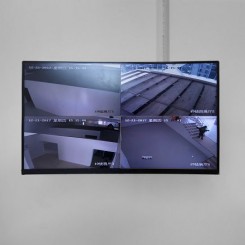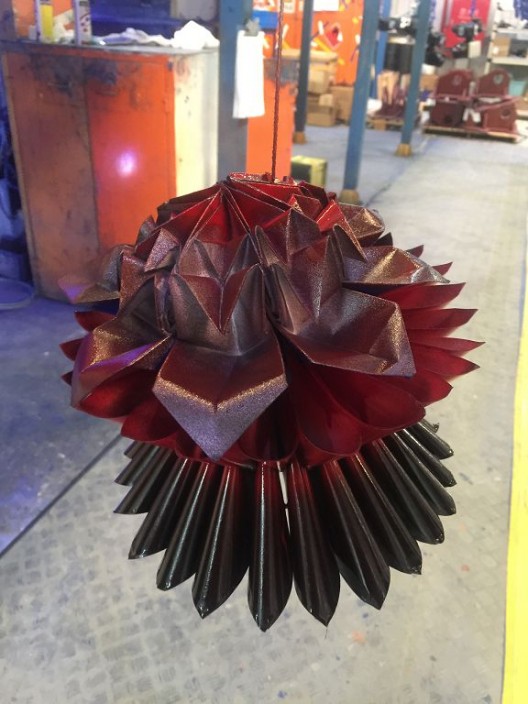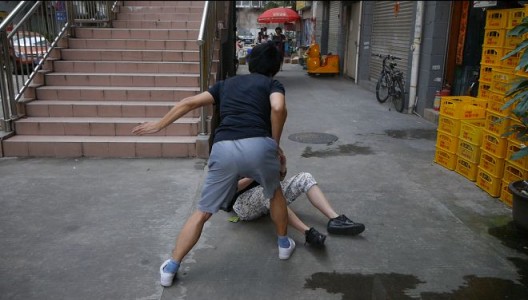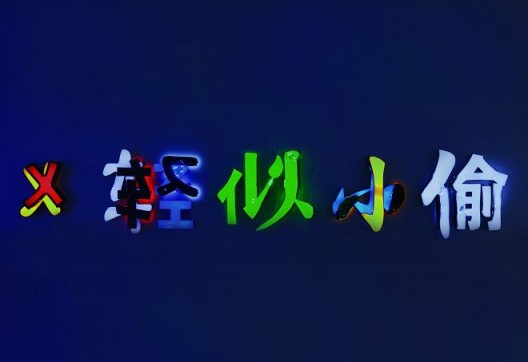“Detour In Times”, Guangdong Times Museum (Times Rose Garden III, Huangbian North Road, Baiyun North Avenue, Guangzhou), Dec 16, 2017–Feb 4, 2018
On the opening day of “Detour in Times” at the Times Museum, the audience was offered the chance to follow the curatorial team and visit multiples spaces in and outside the museum on foot starting at 11:30. Gathering at the project space HB Station next to the museum, the audience could first fill up on Cantonese nosh at the nearby restaurants, and then, under the guidance of A-Liang 阿亮, an artist-in-residence from Thailand (Henry Tan), they could officially enter the urban village zone, and pay a visit to three badminton courts that A-Liang frequented every week. The badminton courts are respectively located in the hinterlands of Huangbian Village, in the dormitories of various state-owned corporations, and Rose Garden—a mid-range housing estate developed by Times Property. Then guests returned to the museum lobby, and took part in a conference wherein art workers shared their experiences and strategies in local practices. By then it would have been close to four o’clock, the standard time for opening programs to begin. As soon as the assembly line of tours, interviews, and artist performances ended, the museum team and curators showed up at the other end of the museum to discuss the production models of art institutions, as well as Times Museum’s own responses and practices … As the crowds moved, the conversations relocated to the other side of the city. On the balcony of two shop fronts that served as an autonomous youth space supported by the museum, located in the depth of a residential area now shrouded in dark, a dialogue about anarchy, cross-disciplinary alliances, and self-education began to percolate, continuing until dawn.
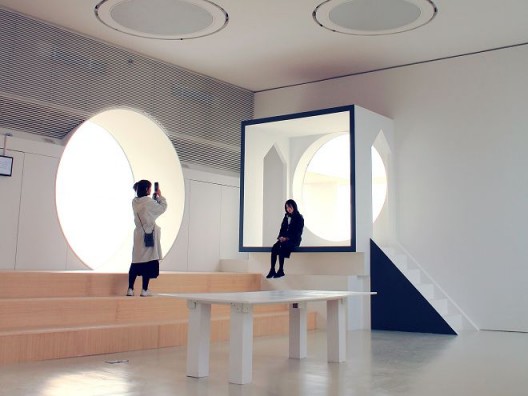
“寻向所志”展览现场,广东时代美术馆,2017(图片由广东时代美术馆提供)
“Detour In Times”, installation view, Times Museum, 2017 (courtesy of Times Museum)
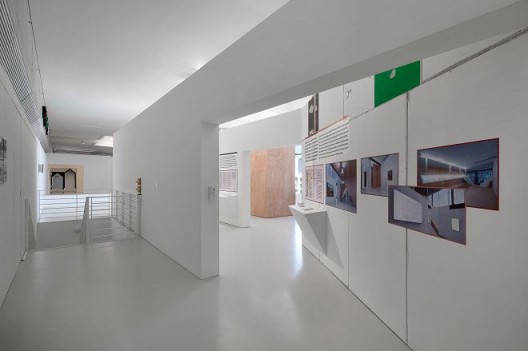
“寻向所志”展览现场,广东时代美术馆,2017(图片由广东时代美术馆提供)
“Detour In Times”, installation view, Times Museum, 2017 (courtesy of Times Museum)
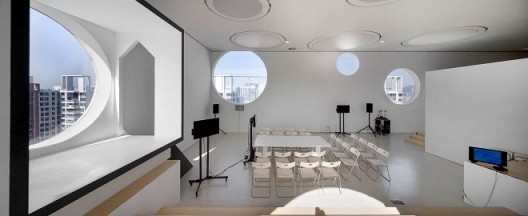
“寻向所志”展览现场,广东时代美术馆,2017(图片由广东时代美术馆提供)
“Detour In Times”, installation view, Times Museum, 2017 (courtesy of Times Museum)
The press release published on Wechat describes it as: “As the participants switch between different settings within a concentrated time period, they experience an intense overlay of different feelings and concepts that they’ve absorbed at various sites . . . the exhaustion of the body and the acuity of the mind form a certain tension.” If we were to trace the model of walking as a production method in exploring and generating direct dialogues with bodily experiences, perhaps we could look to “Long March—A Walking Visual Display”, organized by Lu Jie in 2002, as an important case study. It clearly introduced a novel element that was rare or had not yet been synthesized into contemporary Chinese art exhibition making practice at the time: the exhibition location moved from the white box to a series of mobile spaces, and even included the act of walking itself. The temporality of the exhibition was also extended to be an open process that could be constantly re-activated, along with works created on-site, the exhibiting of artworks on the spot, renewed viewing and re-excavation of local art, as well as the combination of walking and conversing. Through subsequent Long March projects, these methods were further developed, tested, and disseminated into a series of exhibition projects with historical-geographic dimensions, culminating in “Ho Chi Minh Trail” (2008) as the most interesting sample. The latter directly dropped art workers from the Northern hemisphere onto roads of the foreign South. The exhaustion from walking, friction between the physical body and the environment, and the intensified purification of the mind—we saw traces of these experiences in the opening workshops of “Detour in Times”.
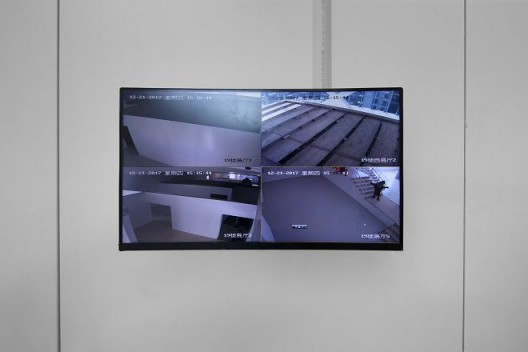
“寻向所志”展览现场,广东时代美术馆,2017(图片由广东时代美术馆提供)
“Detour In Times”, installation view, Times Museum, 2017 (courtesy of Times Museum)
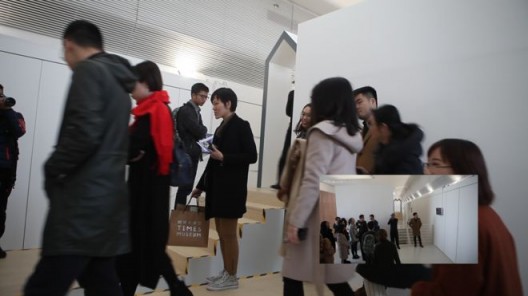
“寻向所志”展览现场,广东时代美术馆,2017(图片由广东时代美术馆提供)
“Detour In Times”, installation view, Times Museum, 2017 (courtesy of Times Museum)
It is worth noting that the decade from 2008 to 2018 witnessed the transition of fieldwork and localized practice in contemporary art from the realm of alternative practice to what it is now, a familiar model. Yet the widespread integration of production, exhibition, and localization is now encountering new problems. For “Detour in Times”, even though the three-in-one model of visiting/walking + instant capturing/on-site discussion + exhibition replicates certain methods found in the “Long March Project”, it responds to a vastly different situation, not to mention that it engages with vastly different content. Huangbian Village is nowhere like Yan’an or the Ho Chi Minh Trail. The latter’s historical, political metaphors and symbolism determine not only the visitors’ viewing and understanding of place, but also act as themes for activating place. But for a place like Huangbian, aside from the contemporary dictates that “exhibitions should integrate with their certain locality”, there doesn’t seem to be sufficient reason to necessitate walking. Why walk in areas adjacent to the museum? Why couple the acts of walking with exhibition viewing? Even if the practice of the institution is intimately connected to the local environment, this doesn’t necessarily mean that bundling the acts of walking, discussion and exhibition viewing together is a comprehensive response to this issue.
Perhaps this critique is a little severe. At any rate, there are probably valid reasons why these methods were used in “Detour in Times”. Exhibition content encompasses the institutional practices of Times Museum, which are literally discussed on several display boards taking up close to one third of the wall space. Using a visual and textual format akin to a three-dimensional PowerPoint presentation and a crisscrossing narration, the display boards are a retrospective of Times Museum itself and its previous shows. We are able to learn from these finely-made exhibition boards that as early as the spatial planning stage, there existed blueprints for the museum’s working methodologies: in addition to taking responsibility for local cultural production, it also has had to reflect on its own path of development, using itself as a case-study and research subject. In fact, this exhibition is a combination of institutional retrospective and display of conventional artworks. As such, artworks co-exist with spatial constructions and reconfigurations produced by the architecture team, with large-scale institutional discourse directly inserted into the exhibition by means of exhibition boards. Admittedly, it constitutes a brand-new experiment, yet still, it is impossible to ignore the show’s ambiguity, vacillation, and rigidity. We are still unsure of the real question posed by “Detour in Times” and whether He An’s neon texts, Li Liao’s video of attacking one’s enemies, Li Xiaofei’s lyrical assembly-line poetry, or Li Zhan’s earring market are connected by a specific time, space context and logic? And when they are juxtaposed with these ten-meter-long exhibition boards that trace back the organization’s history, who is truly present, and whose questions are to be answered by whom? In this half-cooked sampler platter, perhaps the most savory element is Li Juchuan’s surveillance cameras which have been placed around the exhibition hall. They turn the act of looking into an act of being observed, but viewers did not come to this exhibition in order to watch themselves.
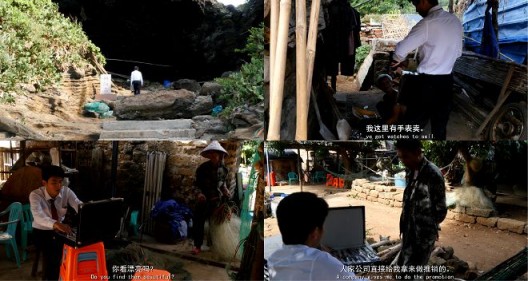
蔡回,《手表》,行为录像,10分钟47秒,2016(作品由艺术家及亚洲当代艺术空间提供)
Cai Hui, “Watches”, performance, 10’47″, 2016 (courtesy of the artist and A+ Contemporary)
